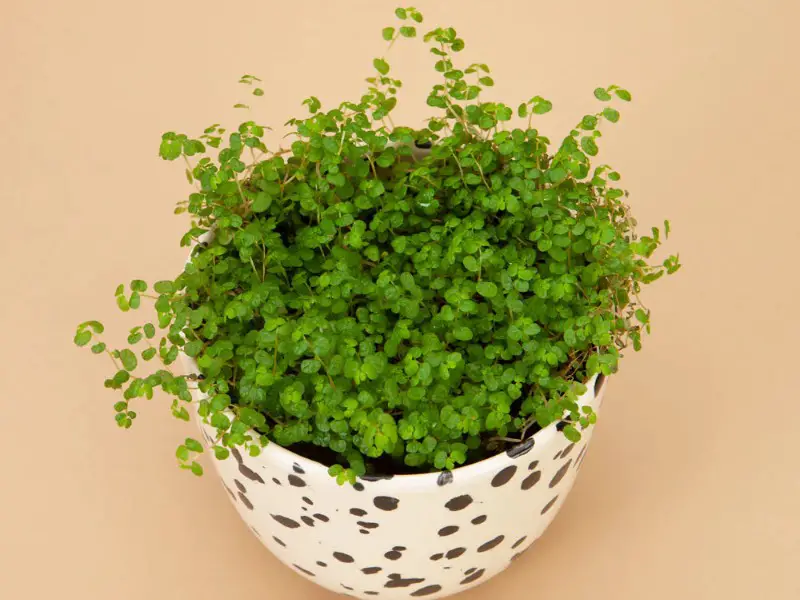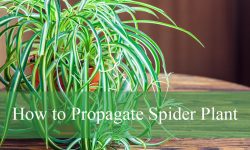Baby Tears Plant (Soleirolia soleirolii), often called Angel’s Tears or Paddy’s Wig, is a stunning tropical perennial known for its fine, delicate mat of tiny round leaves. Resembling moss at first glance, this plant belongs to the nettle family. What makes it unique is its dense carpet of foliage that creates an enchanting, lush green cover over soil or container surfaces.
With its elegant, low-growing structure, the Baby Tears plant can thrive in various environments with the right care. In this article, we will dive into the most detailed guide on how to care for and grow this delightful plant.
What is Baby Tears Plant?
- Common Names: Baby Tears, Angel’s Tears, Paddy’s Wig
- Botanical Name: Soleirolia soleirolii
- Family: Urticaceae (Nettle family)
- Plant Type: Herbaceous perennial
- Mature Size: Typically 4 inches tall, spreading up to 36 inches wide
- Sun Exposure: Partial sun to full shade
- Soil Type: Rich, moist loam
- Soil pH: Slightly acidic
- Bloom Time: Spring, Summer
- Flower Color: Creamy ivory
- Hardiness Zones: USDA Zones 9 to 11
- Native Area: Mediterranean
Ideal Growing Conditions for Baby Tears Plant

The Baby Tears plant thrives in warm, humid environments and needs moderate care to stay healthy. Let’s take a closer look at the critical growing conditions for this plant.
Light Requirements
Baby Tears prefer bright, indirect light but can tolerate partial shade. Too much direct sunlight may scorch the delicate leaves, causing them to dry out or develop brown spots. When grown indoors, this plant can thrive under artificial lighting, making it a fantastic option for spaces with limited natural light. For outdoor planting, ensure the plant is positioned in a shady location to protect it from the harsh midday sun.
Soil Preferences
The Baby Tears plant flourishes in rich, moist soil, ideally loam amended with organic matter like compost, humus, or manure. The addition of organic material helps maintain the moisture level that the plant requires, promoting healthy root growth. For indoor planting, a high-quality commercial potting mix is sufficient, while outdoor plants benefit from well-draining garden soil.
Watering Needs
This plant is known for its love of moisture. The soil should be consistently kept damp but not waterlogged. Baby Tears plants are prone to wilting if allowed to dry out, but they typically recover quickly once watered. During the growing season (spring and summer), increase watering frequency. However, in winter, reduce watering slightly, letting the surface of the soil dry out between waterings. Be cautious not to let the plant sit in water for extended periods, as this may lead to root rot.
Temperature and Humidity
The ideal temperature for growing Baby Tears plants ranges between 50°F and 70°F. While they can tolerate light frost, freezing temperatures will damage the plant’s foliage. In areas prone to frost, it is best to grow Baby Tears indoors or in containers that can be moved inside during colder months.
Humidity is crucial for Baby Tears, and they prefer environments with at least 75% humidity. Bathrooms or kitchens with high moisture levels are ideal spots for this plant. Alternatively, you can create a humid environment using a pebble tray or a humidifier, especially in drier climates.
How to Care for Baby Tears Plants
Fertilization
To keep your Baby Tears looking lush and green, regular feeding is necessary. Use a balanced liquid fertilizer every two weeks during the growing season (spring and summer). Liquid fertilizer is preferable over granular forms since the dense foliage makes it difficult for solid fertilizers to penetrate the soil. A well-fertilized Baby Tears plant will grow more robustly and retain its vibrant appearance.
Pruning and Maintenance
While not essential, pruning Baby Tears can improve their appearance, encouraging new growth and helping maintain a compact shape. Trim back the plant if it becomes too unruly or starts spreading beyond its designated space, especially if used as a companion plant or in terrariums. For variegated varieties, make sure to prune green stems to prevent the plant from reverting to a solid green form.
Propagation of Baby Tears Plant
Baby Tears are easy to propagate and spread quickly by rooting wherever their stems touch the soil. There are two popular propagation methods: division and stem cuttings.
Propagation by Division
To propagate by division:
- Gently remove a section of the plant along with its roots using a small trowel.
- Replant the divided section in a new container or directly in the ground with well-draining soil.
- Keep the soil moist until new growth begins.
This method is simple and highly effective, especially during the active growing seasons of spring and summer.
Propagation by Stem Cuttings
To propagate Baby Tears through stem cuttings:
- Use sterilized scissors to cut healthy stems of about 2 inches.
- Remove the leaves at the base of the stem.
- Plant the cutting in moist potting soil, optionally dipping the cut end in rooting hormone.
- Cover the cutting with plastic wrap or a glass dome to retain moisture.
- After a few weeks, new roots should form, and you can transplant the rooted cutting as desired.
Container Gardening and Repotting
Baby Tears plants adapt exceptionally well to container life. In a hanging basket, the trailing foliage spills gracefully over the edges, creating a striking visual effect. They also work beautifully in terrariums, where their creeping growth can cover the soil and edges of the glass.
Repotting
Due to their fast growth rate, Baby Tears often require repotting. Choose a larger container each time to accommodate their expanding root system. Be careful when handling this delicate plant. Instead of pulling it out by its stems, gently tap the container to release the plant and replant it in fresh soil with good drainage.
Overwintering Baby Tears Plants
For gardeners in colder regions, Baby Tears plants should be brought indoors before frost sets in. While they can tolerate a light frost, sustained cold weather will damage or kill the plant. If grown in containers, simply bring them inside and place them in a spot with bright, indirect light.
Common Pests and Diseases
Baby Tears plants are relatively hardy but may occasionally face problems like:
- Aphids, Whiteflies, or Scale: These pests may attack outdoor plants. Treat affected plants with insecticidal soap or neem oil.
- Root Rot: Caused by overwatering and poorly draining soil, root rot can be deadly. Always ensure the soil is damp but not soggy, and repot the plant in well-draining soil if root rot is suspected.
Blooming and Flowering Tips
Though Baby Tears are primarily grown for their foliage, they do produce small, creamy ivory flowers in the spring and summer. Outdoor plants are more likely to bloom than indoor ones. To encourage more blooms, plant Baby Tears in a shaded outdoor spot and provide consistent moisture and nutrition.
Common Problems and Solutions
Baby Tears plants are relatively low-maintenance, but certain problems can arise:
- Wilting: If your plant wilts frequently, it may be a sign of insufficient watering or a pot-bound root system. Ensure consistent moisture and repot when necessary.
- Browning Leaves: Exposure to direct sunlight or dry air can cause browning. Move the plant to a shadier spot and maintain high humidity.
- Blackening Leaves and Root Rot: Overwatering leads to blackened leaves and root rot. Repot the plant in fresh, well-draining soil and prune any damaged parts.
Conclusion
Caring for a Baby Tears plant can be a rewarding experience, especially if you provide the right balance of moisture, humidity, and light. With proper attention, this charming perennial will create a beautiful, dense carpet of greenery, perfect for terrariums, hanging baskets, or ground cover in shaded gardens. Follow the steps outlined in this guide, and your Baby Tears plant will thrive for years to come, adding a soft, lush touch to your indoor or outdoor space.






